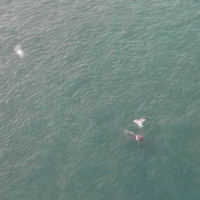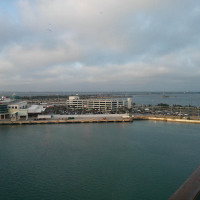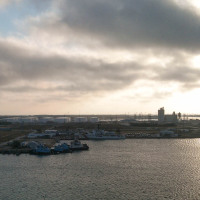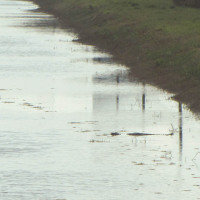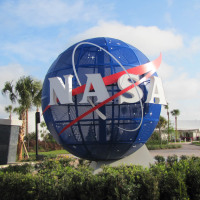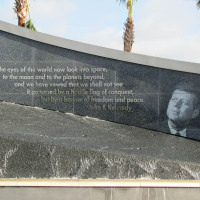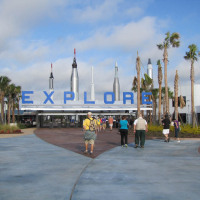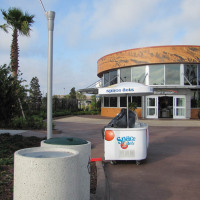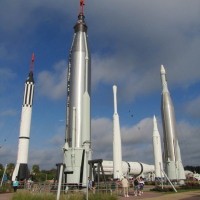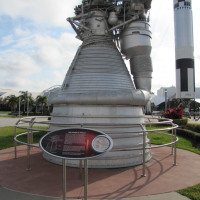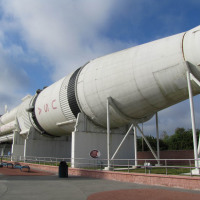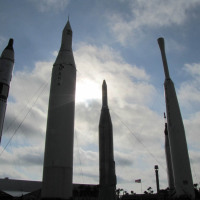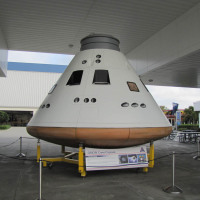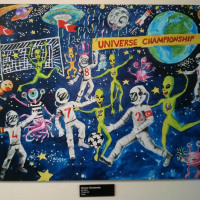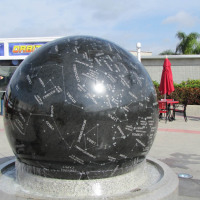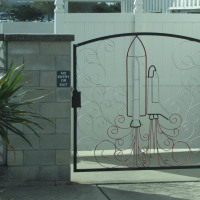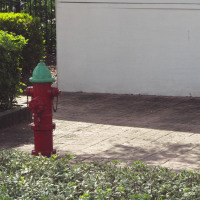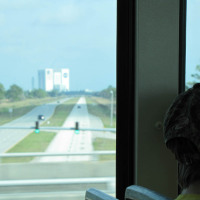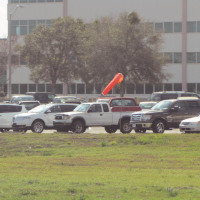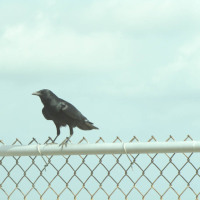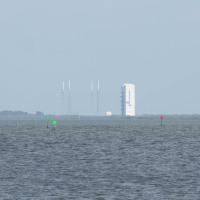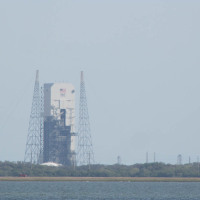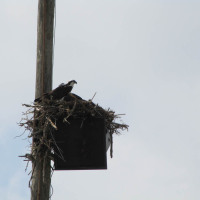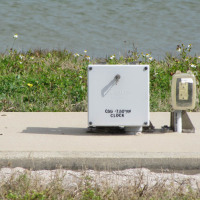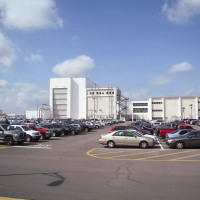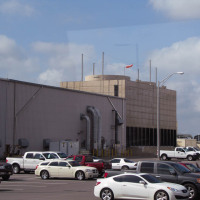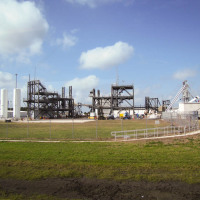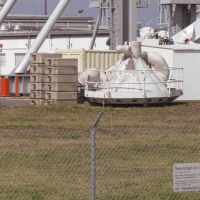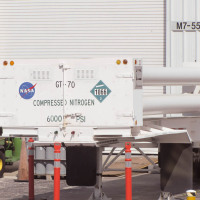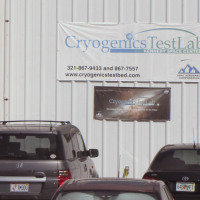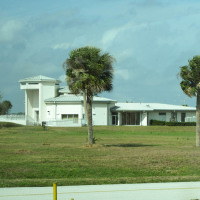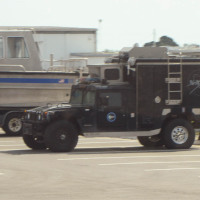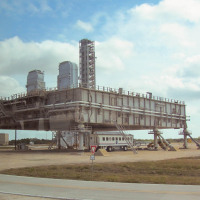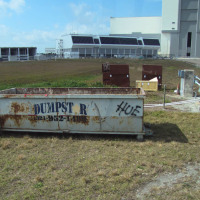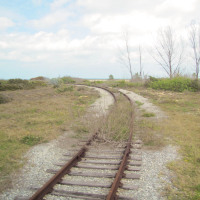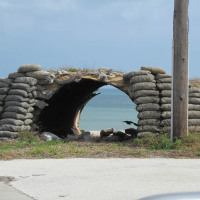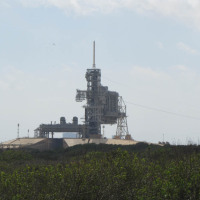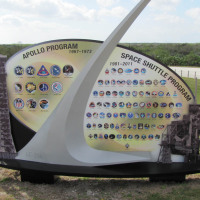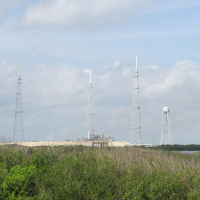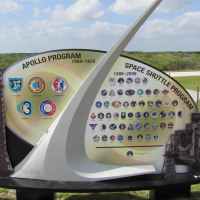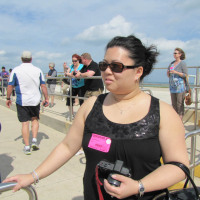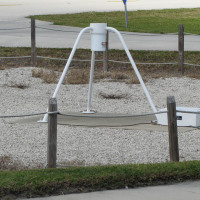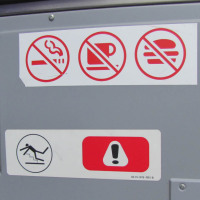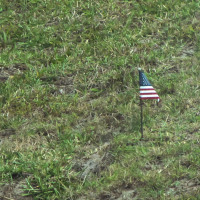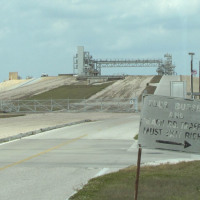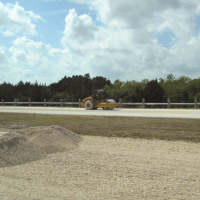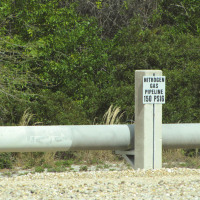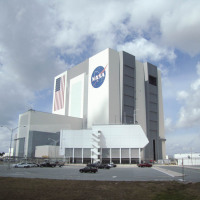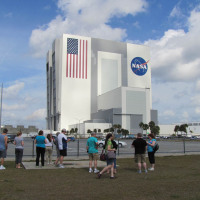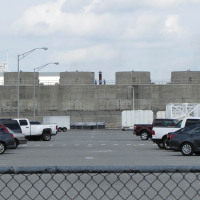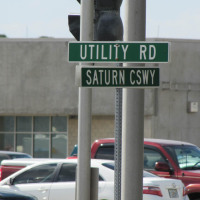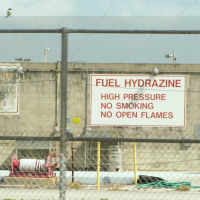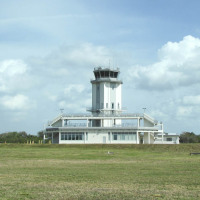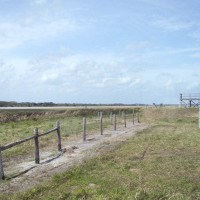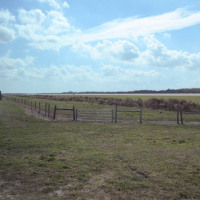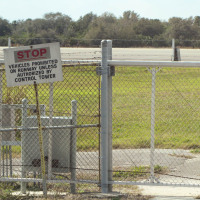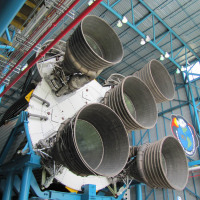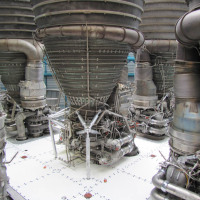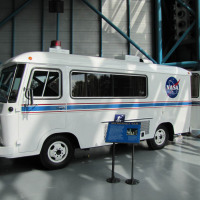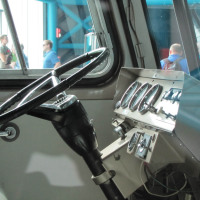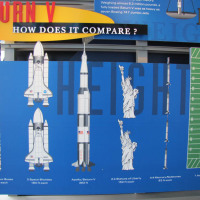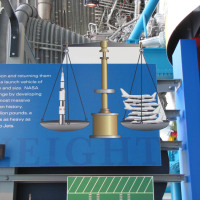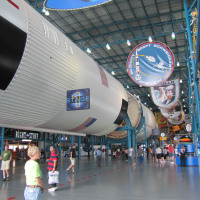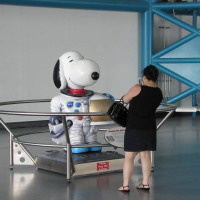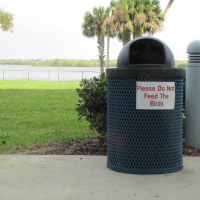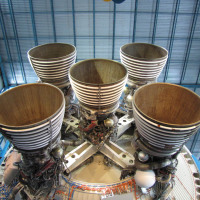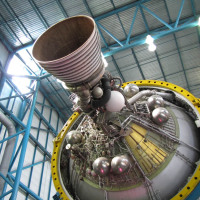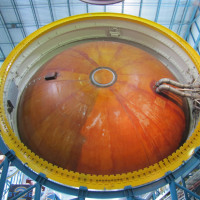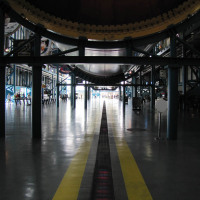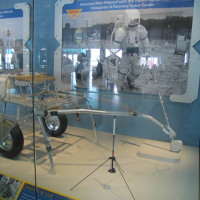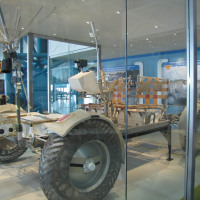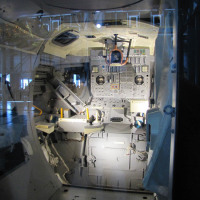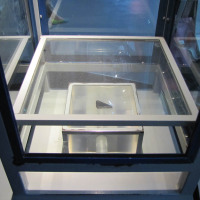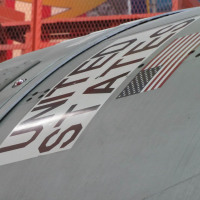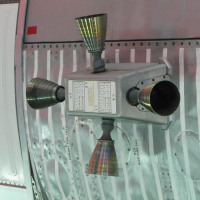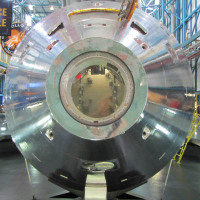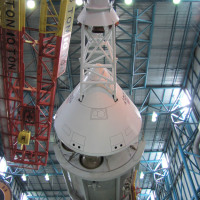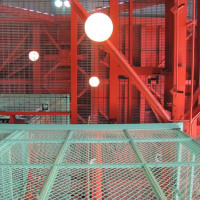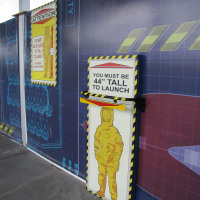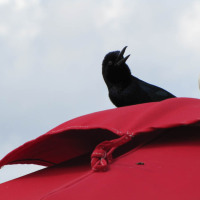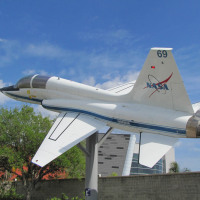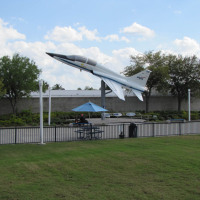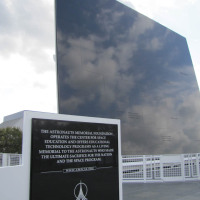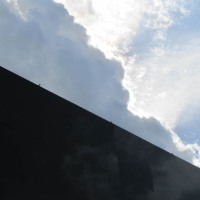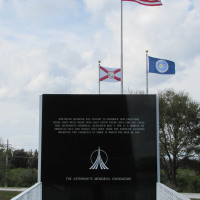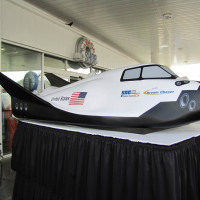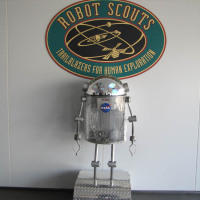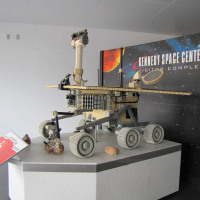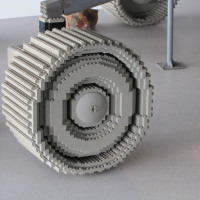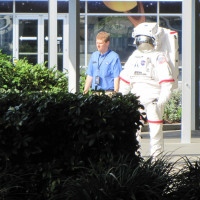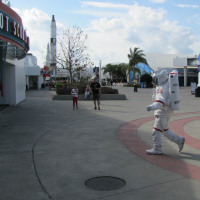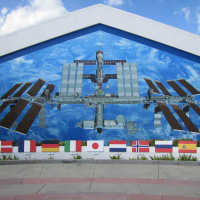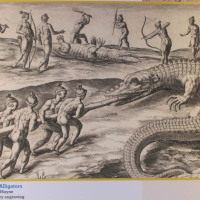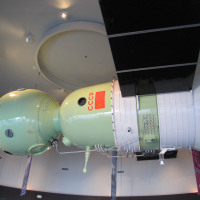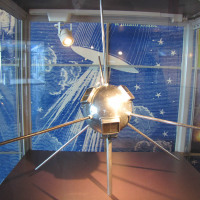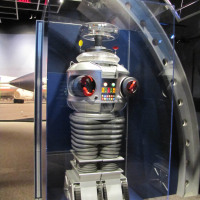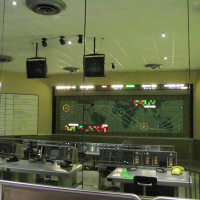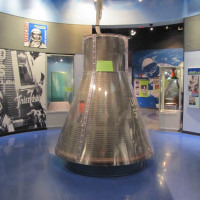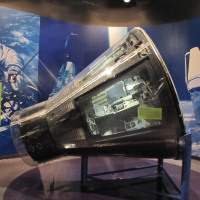On Wednesday, we woke up just as the ship was coming into Port Canaveral, Florida—just south of the Kennedy Space Center. From the decks, we could see the space center’s iconic assembly building and launch pads in the distance.
Ash Wednesday
It was Ash Wednesday, which is the first day of the penitential season of Lent and is recognized by Catholics with a day of fasting and abstinence [from meat]. Church leaders in the United States define the fast as eating only one ‘main’ meatless meal and two smaller meatless meals (which combined are no larger than the one ‘main’ meal). Individual Catholics may choose to make a more traditional fast if they wish; personally, I usually refrain from food all-together until a single, meatless dinner in the evening.
This practice is meant to be a sacrifice . . . but following it on a food-laden cruise ship is particularly difficult!
We did go up to the buffet, where Melissa had a small breakfast and I had a nice cup of coffee. While we sat, I noticed a dolphin in the Port Canaveral harbor—just a hundred yards or so off the side of the ship—playfully flipping around and swimming in circles. Every time he surfaced, seagulls would dive-bomb him. I couldn’t tell if they were annoying the dolphin, or if he was playing with them. I managed to get a single relatively-clear photo of one of the gulls ‘attacking’ the dolphin.
Soon enough the dolphin moved on, but not long after we noticed a pair of fins sticking out of the water heading toward the ship. When they got closer, we could see that it was an adult dolphin with a child close behind. I’m guessing that it was a parent teaching his or her kid how to put on a show for cruise ship passengers. Sadly, before I could get a photo, they swam (apparently) under the ship and disappeared.
After our excursion (details below), we had an hour or two to relax in our cabin before heading to dinner for our one meatless meal of the day—a delicious seafood dish with shrimp, scallops, and mussels.
The Kennedy Space Center
We had an excursion to the Kennedy Space Center that departed at 8:30 a.m. I have always been interested in aeronautics and space technology, and have been to the Smithsonian Air and Space Museum countless times . . . but I had never been to the Kennedy Space Center at Cape Canaveral, Florida.
There were two ‘official’ excursions to the center, and Melissa and I opted for the more expensive one because it included a bus tour of parts of the facility that usually aren’t publicly accessible. I’m not sure if it was really worth the extra money, but I still enjoyed it.
The excursion took us first to the Kennedy Space Center’s visitor center, where we had about a half hour to browse around and take some photos before viewing a 3D IMAX film about the Hubble Space Telescope. From there we went on a bus tour of the National Aeronautics and Space Administration (NASA) complex, including [relatively] close-up views of the main launch pads, the vehicle assembly building, the Space Shuttle landing runway, and a number of administrative and support buildings.
The NASA civilian space center is actually located on Merritt Island, which is separated from Cape Canaveral by the Banana River. The military space center—Cape Canaveral Air Force Station—is the launch facility located on Cape Canaveral itself. To make things extra confusing, Cape Canaveral was officially known as Cape Kennedy from 1963 to 1973, even though the Kennedy Space Center was located on a completely separate land mass.
Anyway, although NASA owns the bulk of Merritt Island (except its southernmost areas, which are privately owned and developed), it only uses a small percentage of that land for its operations. As such, the un-used portions are administered as a National Wildlife Refuge, and all kinds of animals roam free amid the assembly and launch facilities. There are bald eagles’ nests, ospreys, pelicans, and alligators all over the place. I had a hard time getting any good gator photos, but we probably saw ten or fifteen of them total during the bus tour. On the way back to the ship at the end of the day, we even saw a wild boar . . . but he was too fast for me to get a photo.
One of the two Space Shuttle launch pads—Launch Complex 39A—was still in an apparently Shuttle-ready configuration, despite the retirement of the Space Shuttle program. The other facility—Launch Complex 39B—has been mostly torn down, and is expected to be used for future launches whenever we finally build something to replace the Space Shuttle.
We also got a good look at the massive assembly building, which is the fourth largest building (by volume) in the world. It really doesn’t look all that big until you start looking around its base, where you can get a sense of scale from the miniature parked cars and palm trees. After that, we made a quick pass by the Shuttle Landing Facility—one of the longest and strongest runways on earth.
The bus tour ended by dropping us off at the Apollo/Saturn V center, a museum on the Kennedy Space Center property dedicated exclusively to the Apollo program and the Saturn V rocket. The centerpiece of the museum is an actual Saturn V rocket laid on its side and mounted overhead. All I can really say is, wow, that is one big rocket.
After spending some time there, we caught a bus back to the main visitor center to see everything we didn’t have time to see at the beginning. We rode the ‘Shuttle Launch Experience’ ride (which attempts to simulate being inside a Space Shuttle during launch), visited the astronaut memorial, and viewed some of the other exhibits—including an incredibly cheesy ‘Robot Scouts’ exhibit that didn’t fit in at all with the otherwise excellent facility.
All-in-all, it was great fun. My only disappointment is an accident of timing . . . with the decommissioning of the Space Shuttle Program, the surviving craft were farmed out to museums around the country. Shuttle Atlantis, however, stays at the Kennedy Space Center and will become a permanent exhibit at the visitor center. Atlantis has already been moved to a new building at the center, but it isn’t yet open to the public.
I am interested to see it when it opens. My understanding is that they want to show Atlantis ‘in action,’ so it will be suspended at an angle with the cargo doors open and the robotic arm extended—quite different from how the other Shuttles are being displayed at their respective museums.

